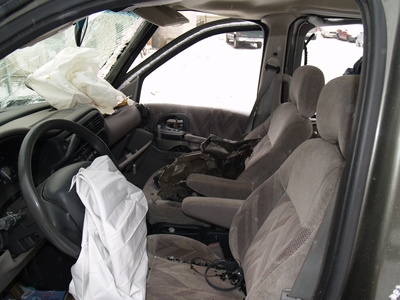
You are driving down the road in a late-model automobile. Suddenly, a car swerves and you are involved in an accident. Before you know what has happened, your car's computer activates its passive restraint systems to help protect the occupants from serious injury.
According to the Repairpal Auto Repair Encyclopedia, this passive restraint system is called the supplemental restraint system (SRS). SRS is "passive'' because it functions without the occupant having to do anything. Seat belts are active; they have to be manually snapped to work. SRS is computer-operated and decides what action to take depending on its various sensor readings.
In a crash, passenger airbags may or may not be activated based on the weight of the passenger. Side airbags and side air curtains (at the tops of side windows) may deploy, based on the angle of the crash. Seat belts will lock and tighten. Not all cars have these features, as each make and model of car varies. (Ref. 1)
The SRS warning light is a dashboard-mounted light that comes on when you start your car as the computer runs a check on the entire system, including its own circuits. If all components pass the scan, the light goes out. (Refs. 1 & 2)
With all the complex sensors, wiring and computer circuits involved in the system, any fault that causes the light to remain on cannot be determined without plugging the computer into a diagnostic tool.
The vehicle should be taken to a dealer or repair facility as soon as possible for diagnosis and repair. Don't delay. If the light is on when an accident occurs, the airbags and other restraints might not deploy. (Refs. 1 and 2)